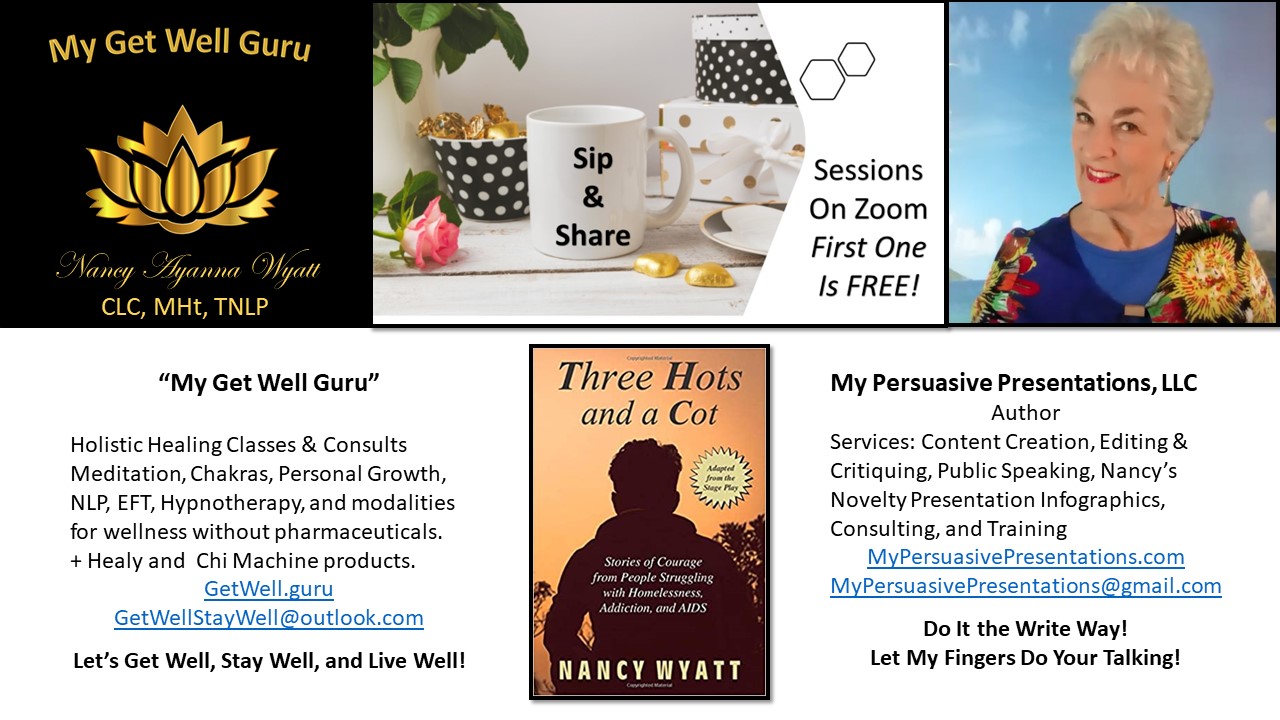 PTSD is defined by the Mayo Clinic as follows.
PTSD is defined by the Mayo Clinic as follows.
Post-traumatic stress disorder (PTSD) is a mental health condition that’s caused by an extremely stressful or terrifying event — either being part of it or witnessing it. Symptoms may include flashbacks, nightmares, severe anxiety and uncontrollable thoughts about the event.
In addition, the Cleveland Clinic states:
Post-traumatic stress disorder (PTSD) is a common mental health condition that can develop after a traumatic event. It involves symptoms like flashbacks, anxiety, negative thoughts and beliefs, hypervigilance and more. The main treatment for PTSD is psychotherapy (talk therapy).
It adds:
People with PTSD have intense and intrusive thoughts and feelings related to the experience that last long after the event. PTSD involves stress responses like:
- Anxiety, depressed mood, or feelings of guilt or shame.
- Having flashbacks or nightmares.
- Avoiding situations, places and activities related to the traumatic event.
These symptoms cause distress and interfere with your daily functioning.
People with PTSD May Find It Hard to Experience Unfettered Beauty. It’s Always Like Seeing Through Shattered Glass.
Video Player
What Are Some Alternative Methods for Helping People who Have PTSD?
The Cleveland Clinic mentions only psychotherapy (talk therapy). However, I am aware of other approaches that can be used along with psychotherapy or instead of that treatment. I’ll share eleven examples that are evidence-supported and/or emerging approaches. There are more, but this already is a long post!
1. Somatic and Body-Based Therapies
First, what does “somatic” mean? Vocabulary.com supplies this definition.
-
Somatic Experiencing (SE): It focuses on releasing trauma stored in the body through awareness of physical sensations. Certain meditations guide a person to train focused attention on various parts of the body and to allow themselves to feel sensations there.
Other approaches involve dancing or other forms of exercise. These movements can release emotions and stuck energy, generally. They also allow a person to concentrate on specific areas of pain and congested energy in one’s body.
-
Sensorimotor Psychotherapy: Integrates somatic therapy with talk therapy to address trauma. Founding SPI trainer, Kekuni Minton, PhD, believes people have guiding intelligence within themselves. Therapists can help them delve into how their responses to experiences affect them in terms of what is and is not working for their well-being. This process can assist in overcoming PTSD.
-
Yoga and Mindful Movement: These practices can improve self-regulation, reduce anxiety, and reconnect people with their bodies. There are innumerable videos on YouTube and other sources that people can access to teach them the kinds of yoga and/or mindfulness practices that best suit the person at different stages of development.
2. Eye Movement Desensitization and Reprocessing (EMDR) Therapy
This is “A structured therapy that encourages the patient to briefly focus on the trauma memory while simultaneously experiencing bilateral stimulation (typically eye movements), which is associated with a reduction in the vividness and emotion associated with the trauma memories.” ~ American Psychological Association
Introduction to EMDR.
Eye Movement Desensitization and Reprocessing (EMDR) therapy (Shapiro, 2001) was initially developed in 1987 for the treatment of post-traumatic stress disorder (PTSD) and is guided by the Adaptive Information Processing model (Shapiro, 2007).
EMDR is typically delivered one to two times per week for a total of 6-12 sessions, although some people benefit from fewer sessions. Sessions can be conducted on consecutive days.
- Let’s view a video from the EMDR International Association to learn how it works. Click Here.
- A different version uses sound. Click Here for Bilateral Stimulation Music | EMDR | 🎧 Listen with headphones | Begin. by Jorge Henderson Collazo
- EMDR is backed by strong clinical evidence and endorsed by the WHO (World Health Organization) and the American Psychological Association.
3. Art and Expressive Therapies
These are self-explanatory and have a multitude of options, so I shall not elaborate further.
-
Art Therapy: Allows people to express and process trauma non-verbally.
-
Music Therapy: Uses music to access emotions, promote relaxation, and improve mood.
-
Dance/Movement Therapy: Uses body movement for emotional expression and healing and to release stuck energy in the body/mind.
4. Nature and Animal-Assisted Therapies for People with PTSD
Again, these are self-explanatory and have a multitude of options, so I shall not elaborate further.
-
Equine-Assisted Therapy: Involves interaction with horses to build trust, confidence, and emotional regulation.
-
Canine Therapy (Service Dogs): Specially trained dogs can help manage symptoms and provide comfort.
-
Ecotherapy: Involves nature walks, gardening, or wilderness programs to reduce stress and improve mood.
5. Neurofeedback and Biofeedback
 Pierogi2 is the originator of this image found on Wikimedia.
Pierogi2 is the originator of this image found on Wikimedia.
-
Trains individuals to control physiological functions such as brainwaves, heart rate, and muscle tension.
-
Helps improve emotional regulation and reduce PTSD symptoms.
Neurofeedback: An Emerging Mental Health Therapy – AAFP
-
“Neurofeedback is a type of mind-body therapy under the umbrella of biofeedback. In general, biofeedback uses sensors (e.g., measuring pulse, respiratory rate, temperature, muscle tension) to detect and promote desired physiologic changes through feedback, typically in the form of audio or video responses. ” – American Academy of Family Physicians | AAFP https://www.aafp.org › afp › afp-community-blog › e
To give details, I asked ChatGPT to instruct us, as I have little direct experience with these methods. The following is from ChatGPT.
Neurofeedback therapy is a form of therapy that uses real-time feedback of brainwave activity to help individuals learn to regulate their brain functions. It involves placing electrodes on the scalp to monitor brainwaves, which are then displayed to the individual, often through visual or auditory cues, allowing them to learn to modify their brain activity.
-
Brainwave Monitoring:
Electrodes are placed on the scalp to detect electrical activity, which is then displayed as brainwaves on a computer screen.
-
Real-time Feedback:
The individual receives visual or auditory feedback (e.g., changing colors on a screen, music) that corresponds to their brainwave activity.
-
Learning and Reinforcement:
As the individual becomes aware of their brainwave patterns, they can learn to adjust them through conscious effort and practice, effectively “training” their brain.
-
Personalized Approach:
Neurofeedback is often tailored to individual needs and specific conditions, with different protocols targeting specific brainwave frequencies or patterns.
-
Improved Focus and Attention:
Neurofeedback can help individuals with ADHD and other conditions improve their concentration and attention.
-
Reduced Anxiety and Stress:
It can also be used to help regulate emotional responses and reduce symptoms of anxiety and stress.
-
Improved Sleep:
Neurofeedback may help with sleep disorders by promoting more balanced brainwave activity during sleep.
-
Enhanced Cognitive Function:
Some studies suggest that neurofeedback can improve cognitive function in various areas, such as memory and executive function.
-
Treatment of Other Conditions:
Neurofeedback is also being explored as a treatment for conditions like PTSD, autism, and chronic pain.
-
Not a Stand-alone Treatment:
Neurofeedback is often used as a complementary treatment alongside traditional therapies like talk therapy or medication.
-
Research is Ongoing:
While neurofeedback has shown promise in various areas, more research is needed to fully understand its effectiveness and optimal protocols.
-
Individualized Approach:
Neurofeedback is not a one-size-fits-all treatment, and the effectiveness can vary depending on the individual and the condition being treated.
-
Potential Side Effects:
Some individuals may experience temporary side effects like headaches, fatigue, or increased anxiety, but these are generally mild and short-lived.
Resources for More Info About Neurofeedback
- Neurofeedback | Psychology Today – What to Expect. Neurofeedback therapy consists of regular 30- or 60-minute sessions. Some people need fewer sessions, while others…
- Neurofeedback: A Comprehensive Review on System Design …Neurofeedback is not a new concept. It has been the subject of the study of researchers for several decades. PubMed / National Institutes of Health: https://pmc.ncbi.nlm.nih.gov/articles/PMC4892319/
This is for informational purposes only.
For medical advice or diagnosis, consult a professional.
AI responses may include mistakes.
6. Neuro-Linguistic Programming (NLP) – With or Without Hypnotherapy.
I happen to be a certified practitioner in both NLP and Transpersonal Hypnotherapy, both of which explore the connection between thoughts, language, and behavior, aiming to improve communication and personal development. I often combine it with Hypnotherapy to get some amazing results on all kinds of topics. Click Here to learn more about that.
7. Psychedelic-Assisted Therapy (Emerging)
-
Substances like MDMA, psilocybin, and ketamine are being studied (under professional guidance) to treat trauma-related disorders.
-
These are currently in clinical trials or controlled settings and not yet widely available.
8. Mindfulness, Meditation, and HypnoMeditation Practices
-
Mindfulness-Based Stress Reduction (MBSR): Uses mindfulness meditation to reduce PTSD symptoms. Click Here for a course on it.
-
Loving-Kindness Meditation: Can help with self-compassion and reducing shame or guilt.
9. Community and Peer Support for People with PTSD
Support Groups: Peer-led or professionally facilitated groups offer connection and shared understanding. Below is a list of several that are based in the United States or Europe.
U.S.-Based PTSD Support Groups
-
National Center for PTSD (VA)
-
Provides peer support groups and comprehensive resources for veterans and their families.
-
-
NAMI (National Alliance on Mental Illness)
-
Offers peer-led support groups like NAMI Connection and NAMI Family Support Group for individuals and families affected by mental health conditions, including PTSD.
-
Website: nami.orgNAMI+1NAMI+1
-
-
Anxiety and Depression Association of America (ADAA)
-
Mental Health America (MHA)
-
Offers resources to help individuals find appropriate support groups tailored to their specific needs.
-
Website: mhanational.org
-
-
Trauma Survivors Network (TSN)
-
Connects trauma survivors through peer support groups to share experiences and enhance coping skills.
-
-
Wounded Warrior Project
-
Provides a variety of programs, services, and events for wounded veterans, including mental wellness programs addressing PTSD.
-
Website: woundedwarriorproject.org Wikipedia
-
🌐 Online PTSD Support Communities
-
Healthline’s Best Online PTSD Support Groups
-
Curated list of top online PTSD support groups, including forums and communities.
-
Website: healthline.com
-
-
Psychology Today – Find a Trauma and PTSD Support Group
-
A directory to find trauma and PTSD support groups, both in-person and online.
-
Website: psychologytoday.comMensGroup.com+2Psychology Today+2self.com+2
-
 UK-Based PTSD Support
UK-Based PTSD Support
-
PTSD UK
-
Provides information, support, and resources for individuals affected by PTSD in the UK.
-
Website: ptsduk.orgPTS DUK
-
-
Mind – PTSD and Complex PTSD Resources
-
Offers information and support for those dealing with PTSD and complex PTSD.
-
Website: mind.org.ukMind+1ADAA+1
-
-
Storytelling and Narrative Therapy: Help individuals reshape the meaning of their traumatic experiences.
10. Ibogaine
“Ibogaine is illegal in the U.S., but it’s proving to be a powerful treatment for post-traumatic stress, traumatic brain injury, and addiction. Jonathan Levinson has this report. And a warning to listeners, this story includes references to suicidal ideation. A group of U.S. vets and lawmakers is leading an effort to get clinical trials up and running for a potent psychoactive drug.” Click here to read the article.
I just learned about this treatment and know nothing about it other than what I read, and that some veterans say it has helped them when nothing else could. So, I leave further research up to the reader.
11. Forgiveness and Broadening the Perspective
What you did (accidentally or on purpose) – that caused harm to self or others – does not define you.
I could present an entire workshop on this, and would be glad to if you want me to. Therefore, comma, I’ll not add more here, except to say that forgiving oneself and others is key to all kinds of healing.
Who Wants To Talk About It?
If you would like to take a class or have a consultation about this, feel free to contact me for a Sip & Share Session on Zoom (that I’ll arrange for you). Click here to learn more about my other coaching and counseling services.
We can have a FREE first session to explore whether and how I may best help you.
Email me at GetWellStayWell@Outlook.com and put “Request Sip & Share” in the subject line. In the body of your email, tell me what topic you want to discuss. I’ll reply so we can coordinate schedules, and then we can chat. There is no obligation for you to book me for a class or consultation thereafter. However, if you want us to explore further, we will make the arrangements.
DISCLAIMER
Neither I nor this website makes any claims about prevention, diagnosis, treatment, or cure for physical, mental, emotional, or spiritual illnesses or symptoms. I am merely recounting my own experiences and research on these topics. This content is for informational and educational purposes and does not provide individual medical advice. Contact your health provider with any questions about your situation and any products or services you choose to use.














